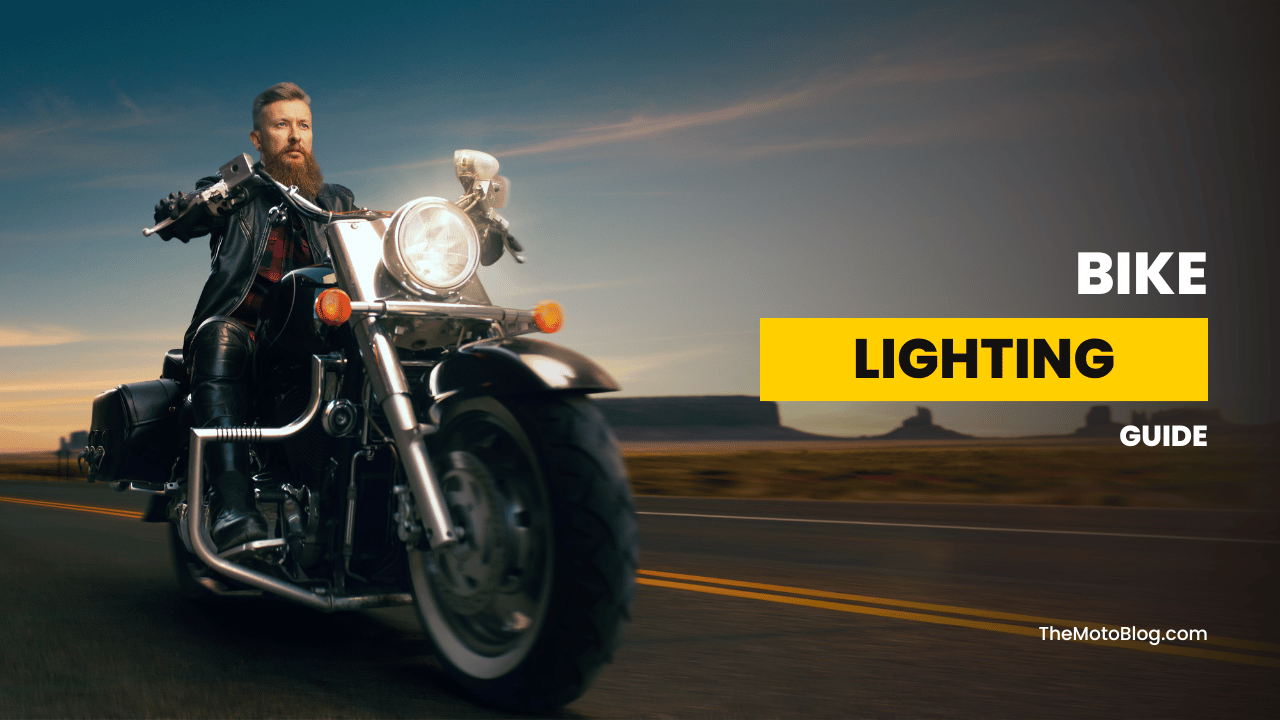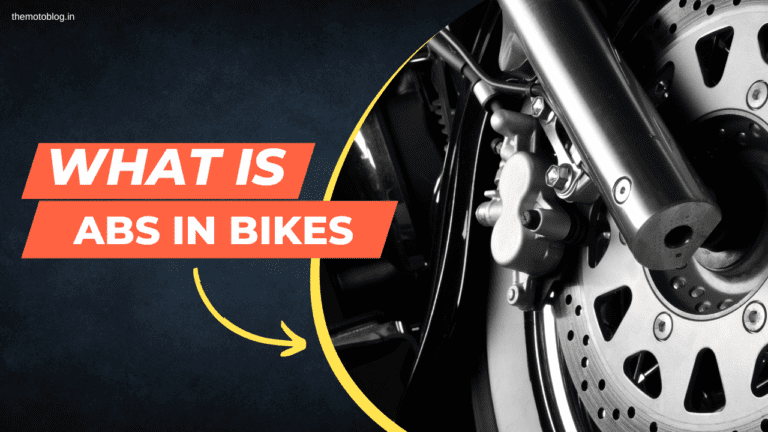How to Choose The Proper Bike Lighting For Your Needs: A Motorcycle Guide
With countless options in the market, choosing the proper bike lighting for your motorcycle in India can be overwhelming. The right lighting not only enhances your night time riding experience, but it’s also crucial for safety on the roads. As a rider myself, I understand how important it is to have the perfect lighting setup to meet your needs.
The first step in selecting the appropriate lighting for your motorcycle is understanding your riding habits and considering the conditions you’ll be navigating. Are you a daily commuter or a weekend adventurer? Will you be riding predominantly on well-lit city streets, or exploring darker rural roads? These factors will play a significant role in helping you make an informed decision.
In India’s vibrant market, bike lighting options vary greatly in terms of brightness, beam patterns, and features, thus making the selection process even more challenging. In this article, we will discuss the key elements to consider when choosing the proper bike lighting for your needs and offer some valuable tips to guide you through the process.
Navigating Indian Road Conditions
When it comes to choosing proper bike lighting for your needs in India, navigating the diverse and sometimes challenging road conditions is a vital consideration. With my extensive riding experience, including completing Ladakh, Spiti, Zanskar, Dhanushkodi, Karnataka Coastal, and Malenadu routes solo and with friends, I’ve gathered valuable insights into the essentials for motorcycle lighting configuration.
Indian roads are known for their unpredictability, as drivers often share space with pedestrians, animals, and other obstacles. Therefore, it’s essential for motorcycle riders to ensure their bike lighting provides strong visibility both during the day and at night. Here are some factors you should consider:
- Road Surface Quality: Indian roads can range from well-paved highways to rough off-road terrains. Your bike lighting should have a strong enough beam to reveal any potholes or obstacles ahead.
- Weather Conditions: Riding in India can mean encountering a variety of weather conditions. Make sure your bike lighting is waterproof and fog-resistant, so you can continue your journey safely in any situation. For more tips on riding under diverse weather conditions, check out this helpful article.
- Traffic Density: Dense traffic can create a challenging riding environment, especially in urban areas. Opt for adjustable lighting so you can control your beam’s intensity, ensuring it’s powerful enough to pierce through congestion while remaining respectful to other road users.
In conclusion, choosing the proper bike lighting for your needs in India involves considering the road conditions, weather, and traffic density. By taking these factors into account, you’ll be much better prepared to ride safely and confidently under any circumstances.
Choosing the Right Type of Bike Lights
Selecting the proper bike lighting for your needs is essential when it comes to motorcycle riding in India. I’ll share some key factors to consider when choosing bike lights and improve the overall riding experience.
Firstly, you’ll want to identify the main purpose of your bike lights. There are several types of lights available, so it’s necessary to understand how they differ. Here’s a brief breakdown of the classifications:
- Headlights: These lights are mounted on the front of your motorcycle and are designed for better visibility while riding at night or in low-light conditions. They ensure that you can see the road ahead and help other road users see you as well.
- Tail lights: Mounted on the rear of your motorcycle, these lights serve two main purposes — to indicate your presence to other riders or vehicles following behind you, and to indicate when you’re braking.
- Indicators: Also known as turn signals or blinkers, these lights help communicate your intentions to change direction when turning or changing lanes.
Next, consider your riding conditions. If you frequently ride in urban areas, you may want bright lights to ensure your visibility in traffic. However, if you mostly ride on rural roads, you might need more powerful lights to illuminate dark areas.
Here are some factors to take into account when choosing a specific type of light:
- Brightness: Measured in lumens, brighter lights will ensure better visibility. However, make sure you don’t blind other riders or drivers with excessively bright lights. Balance is essential.
- Battery life: Depending on your preferences, you can choose between rechargeable or replaceable batteries for your lights. Pay attention to the battery life as well; longer battery life can be especially helpful for long rides and touring.
- Mounted vs. removable lights: While some bike lights are permanently mounted on your motorcycle, others can be removed when not in use. If theft is a major concern in your area, removable lights might be a better option.
Enhancing Visibility with Auxiliary Lights
One way to boost your visibility on Indian roads, particularly on nighttime rides, is to invest in auxiliary lights. These handy devices serve to improve not only your line of sight but also ensure that other motorists can easily spot you. Let me guide you through some key factors to consider when selecting the best auxiliary lights for your motorcycle.
Firstly, you’ll want to think about lumens. Lumens indicate the output of the light source and directly affect brightness. Generally, auxiliary lights have a range of 1000-3000 lumens. Higher lumen counts lead to brighter lights, but it’s important not to go overboard as it might blind other drivers. Aim for a balance between visibility for yourself and consideration for other road users.
Next, consider the light beam pattern. There are typically two types: spot beams and flood beams. Spot beams produce a concentrated light that reaches far, making them ideal for high-speed rides on long stretches of road. On the other hand, flood beams spread light across a wider area, generating better visibility during low-speed maneuvers. Choose the suitable beam pattern depending on how and where you’ll be riding.
Additionally, you should pay attention to the build quality of the auxiliary lights. Opt for lights with sturdy construction, heat-resistant materials, and reliable mounting systems. I’ve found that high-quality auxiliary lights withstand the rigors of long trips better, saving time on frequent replacements.
Another factor to consider is ease of installation and compatibility. Ensure that the auxiliary lights you choose are compatible with your motorcycle’s electrical system and that they won’t drain your battery too quickly. It’s also a good idea to select lights that can be easily installed without professional assistance.
Finally, think about the budget. While there is a wide variety of auxiliary lights available in the market, it’s essential to strike a balance between cost and performance. Investing in a quality set of lights, even if they are slightly more expensive, can pay dividends in the long run in terms of safety and durability.
Considering LED vs. Halogen Bulbs
When it comes to choosing the proper bike lighting for your needs in India, it’s essential to weigh the pros and cons of LED and halogen bulbs. Both types of lighting have their unique advantages and drawbacks, so understanding the differences between them will help you make an informed decision.
LED lighting has become increasingly popular in recent years and for good reasons. Some of the key benefits of LED bulbs include:
- Enhanced energy efficiency: LED lights are significantly more energy-efficient than halogen bulbs, which means they’ll use less power and potentially extend the life of your motorcycle’s battery.
- Long-lasting: LED lights have a substantially longer lifespan compared to their halogen counterparts – they can last up to 25,000 hours, whereas halogen bulbs may only last around 2,000 hours.
- Improved visibility: LEDs offer better illumination, making it easier for others to see you on the road and providing better vision for you during nighttime rides.
On the other hand, halogen bulbs remain a viable option for bike lighting. Some of their advantages include:
- Lower upfront cost: Halogen bulbs are usually cheaper to purchase than LED lights, making them an attractive option for budget-conscious riders.
- Easier to replace: The widespread use of halogen bulbs means that you’ll likely have an easier time finding replacement bulbs when necessary.
To sum it up, both LED and halogen bulbs have their unique sets of benefits, and the choice between them largely depends on factors such as budget, personal preferences, and your specific needs in terms of energy efficiency, durability, and visibility. Understanding the differences between these two types of lighting will help you make the right decision for your bike and ensure that you’re well-equipped for your journeys.
Importance of Reflectors and Indicators
Reflectors are essential because they help make your motorcycle visible to other drivers, particularly in low light situations or when riding in heavy rain. By reflecting light from the headlights of other vehicles, reflectors ensure that you’re seen from a distance, giving drivers more time to react.
Here’s why reflectors are critical:
- Address a common issue: Low visibility is a significant concern for motorcycle riders in India, particularly during monsoon season or in poor lighting conditions.
- Easy to use: Reflectors can be fixed on various parts of your motorcycle, such as the wheels, rear fender or bodywork. They’re a cost-effective way to increase visibility without the need for additional power sources.
- Complementary to other lighting systems: When combined with proper bike lighting, reflectors offer additional protection to ensure you’re visible to other road users.
In addition to reflectors, indicators are essential for safe motorcycle riding, and here’s why:
- Essential for communication: Indicators allow you to communicate your intentions to turn or change lanes, ensuring other road users anticipate your movements and avoid potential collisions.
- Standard for motorcycles: Motorcycles in India, including my Royal Enfield, come with standard indicators. It’s crucial to maintain them in proper working condition for your safety.
Evaluating the Legal Requirements in India
When looking to choose proper bike lighting for your needs in India, it’s crucial to be aware of the legal requirements.
In India, every two-wheeler must have a headlamp that illuminates the road ahead, a tail lamp, a rear reflector, and turn signals. Here’s a breakdown of specific lighting requirements:
- Headlamp: White or yellow light, visible from a distance of 200 metres.
- Tail lamp: Red light, visible from at least 100 metres.
- Rear reflector: Red in color, visible from 100 metres.
- Turn signals: Amber in color, visible from 50 metres.
It’s important to choose lighting that complies with these regulations. Not doing so can result in fines or other penalties.
Different states in India may have additional regulations, so it’s wise to research your local requirements before committing to a particular lighting setup. And remember, while these legal requirements are a good starting point, you may need additional lighting for specific riding conditions.
When thinking of motorcycle lighting, it’s important not to forget about maintenance. Just as I care for my Rynox Storm Evo Riding Pants and Jackets, regular lighting checks and replacements will ensure your safety on the road and extend their lifespan.
By considering the legal requirements, your needs, and bike-specific factors, you’re well on your way to choosing proper bike lighting for your needs in India.
Striking a Balance between Performance and Budget
Choosing the proper bike lighting for your needs in India can be a daunting task, especially with the plethora of options available in the market. In my experience, it’s essential to strike a balance between performance and budget when selecting lighting for your motorcycle.
The performance of your motorcycle lighting will directly affect your safety and visibility on the road. When selecting bike lights, make sure to consider:
- Brightness: Higher Lumens output means better illumination.
- Beam Pattern: A wide beam ensures even distribution of light on the road.
- Durability: Opt for lights with higher ingress protection (IP) ratings for better resistance against dust and water.
It’s equally essential to balance these performance aspects with your budget. Motorcycle lights range in price from affordable to quite expensive. Here are some tips to help you with that:
- Set a budget limit: Before beginning your search, determine how much money you’re willing to spend on lighting.
- Compare products: Look at several options within your price range, assessing their pros and cons.
- Check user reviews and ratings: Assess the performance of bike lighting by reading reviews and looking at ratings from other users.
In addition to lights, keeping your riding gear well-maintained can enhance your overall biking experience. My recommendation would be to check out this comprehensive guide on riding gear maintenance.
Lastly, don’t forget to adapt your riding style according to different weather conditions. Since lighting and visibility can vary under different circumstances, it’s crucial to be aware of how to tackle them. For valuable tips on this, visit this article on riding in different weather conditions.
In summary, finding the proper bike lighting for your needs ultimately comes down to evaluating your priorities, striking a balance between performance and budget, and making the most informed decision possible.
Installation Tips for Optimal Performance
Choosing the right bike lighting for your needs in India is crucial, but so is installing your new lights correctly. After all, proper installation ensures you’ll get the most out of your new purchase. Let’s take a look at some handy tips on how to install your bike lights for maximum efficiency and safety.
First, it’s important to position the headlight at an optimal angle. You’ll want the light to be slightly pointing downwards, illuminating the road roughly 10 to 15 meters in front of your motorcycle. This will make sure you’re not blinding oncoming traffic while still benefiting from ample visibility during night rides.
When it comes to choosing where to mount your lights, consider placing them in a location that allows for minimal vibrations while you’re riding. Bike lights mounted on the handlebars, for instance, can experience excessive shaking when you’re riding on rough terrains. Subsequently, you might need to find a more stable spot on your motorcycle, such as on the frame or the fork.
Another tip is to experiment with different light modes and settings. Many bike lights come equipped with various brightness levels and flashing patterns. Familiarizing yourself with these different settings in various scenarios ensures you’ll have the best visibility possible throughout your rides.
Now, you might want to consider adding auxiliary lights to your motorcycle. These additional lights can further enhance your visibility, whether you’re navigating tight city streets or exploring the open road.
In order to achieve longevity and optimal performance for your bike lights, you should remember to consistently charge them and occasionally clean the lenses. A little maintenance goes a long way in keeping your bike lights in top-notch condition.
FAQs
Is it legal to use LED lights for bikes in India?
While LED Headlights And Taillights Are Generally Permitted In India, Using Additional, Unauthorized LED Lights As Decoration Or In Colors Other Than White, Amber, And Red May Be Illegal.
What are the advantages of LED lights for motorcycles compared to traditional halogen lights?
LED Lights are More Energy-Efficient, Provide Better Illumination at Night, have Longer Lifespans, and are More Resistant to Vibration than Halogen Lights.
What factors should I consider when choosing the proper motorcycle lighting for my needs in India?
Consider Factors Such As Compatibility with your Motorcycle, Brightness, Visibility In Various Weather Conditions, Energy Efficiency, Durability, Ease Of Installation, And Local Legal Regulations While Selecting Motorcycle Lighting.
How can I maintain my motorcycle lighting for optimal performance?
Regularly Clean The Lights To Remove Dust, Dirt, And Grime; Ensure That The Lights Are Aligned Correctly; Check For Any Damage Or Wear; and Replace Any Malfunctioning Parts.
How do I install new motorcycle lighting on my bike?
First, Ensure That The Lighting Kit Is Compatible With Your Motorcycle Model. Follow The Manufacturer’s Installation Guide, Or Consult A Professional Mechanic.
Final Thoughts on Bike Lighting Choices
Choosing the proper bike lighting for your needs is essential, especially in India, where diverse terrains and frequent night rides can put additional demands on your motorcycle’s lighting system. The importance of powerful and reliable lights cannot be overstated.
Based on my experience, here are some final thoughts and suggestions when making your bike lighting choice:
- Your riding styles and conditions: Consider where you’ll be riding, the prevalent weather conditions, and the type of journeys you plan to take. For example, in rural areas with minimal lighting or off-road trails, opt for more powerful lights. If you’re riding in foggy conditions, yellow lights may be more appropriate.
- Ease of installation: Lights that are easy to install and maintain will make your life easier. Research the process beforehand and consider seeking expert help for a seamless and efficient installation.
- Warranty and after-sales support: Purchase lights from reputed brands that offer warranty and after-sales support to keep your bike in optimal condition.
As you can see, your choice of bike lighting largely depends on your riding habits, location, and budget. No matter your selection, prioritizing safety is essential. Being well-equipped, like using my iPhone 13 and Go Pro for documenting my rides, has been invaluable for my adventures. Similarly, making the right decision for your bike lighting will contribute to a safe and enjoyable experience on the road.
If you liked this article, then please subscribe to our YouTube Channel for more Bike Videos. You can also find us on Instagram, Twitter and Facebook.
Disclosure: As an Amazon Associate, I earn from qualifying purchases. Read more about Amazon Affiliate Disclaimer.

Vishwanath Mathpati
I am Vishwanath Mathpati, a full-time Blogger and Motorcyclist from Bidar, Karnataka. I love writing about my Motorcycles Stories and Riding Gears on this blog.
Know More About Me.




